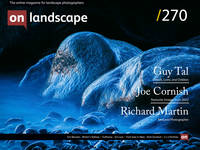The pursuit of freedom
The pursuit of truth and beauty is a sphere of activity in which we are permitted to remain children all our lives.~ Albert Einstein
In his book, Thus Spoke Zarathustra, Friedrich Nietzsche described three “metamorphoses of the spirit”—stages of personal development that people may (if they choose) pursue if they wish to live their lives to the fullest, which, according to Nietzsche, means living according to one’s own values with the greatest degree of freedom. Nietzsche described the three stages as analogous to adopting the attitudes of a camel, a lion, or a child.
The pursuit of freedom to live according to one’s own values, Nietzsche conceded, is not easy. It may involve taking great risks and the will to accept their consequences, whether good or bad (an attitude he referred to in his autobiographical book, Ecce Homo, as “amor fati”—love your fate). In his book, The Gay Science, Nietzsche wrote emphatically: “For believe me!—the secret for harvesting from existence the greatest fruitfulness and the greatest enjoyment is: to live dangerously!”
The Camel
According to Nietzsche, most people go about life with the attitude of a camel. A camel, by this analogy, is one who accepts its burden willingly and obediently, without complaint. Camels are strong and docile, willing to work hard and tackle difficult tasks when needed. A camel, wrote Nietzsche, “kneels down . . . wanting to be well loaded,” and, once loaded, has the fortitude and perseverance to “speed into the desert.” A camel accepts the burdens of life dutifully and unquestioningly. It does not lament its fate nor try to rebel or to fight for greater freedoms than are afforded it by its masters and peers. A camel wishes to be of service, to love and to help others. The camel is Nietzsche’s analogy for people who accept as given the burdens, responsibilities, and values imposed by their society and are willing to fulfil their predestined roles honourably and helpfully: people who are generous and would rather not “rock the boat,” who perform whatever labours are expected of them—even if difficult—to the best of their abilities.



